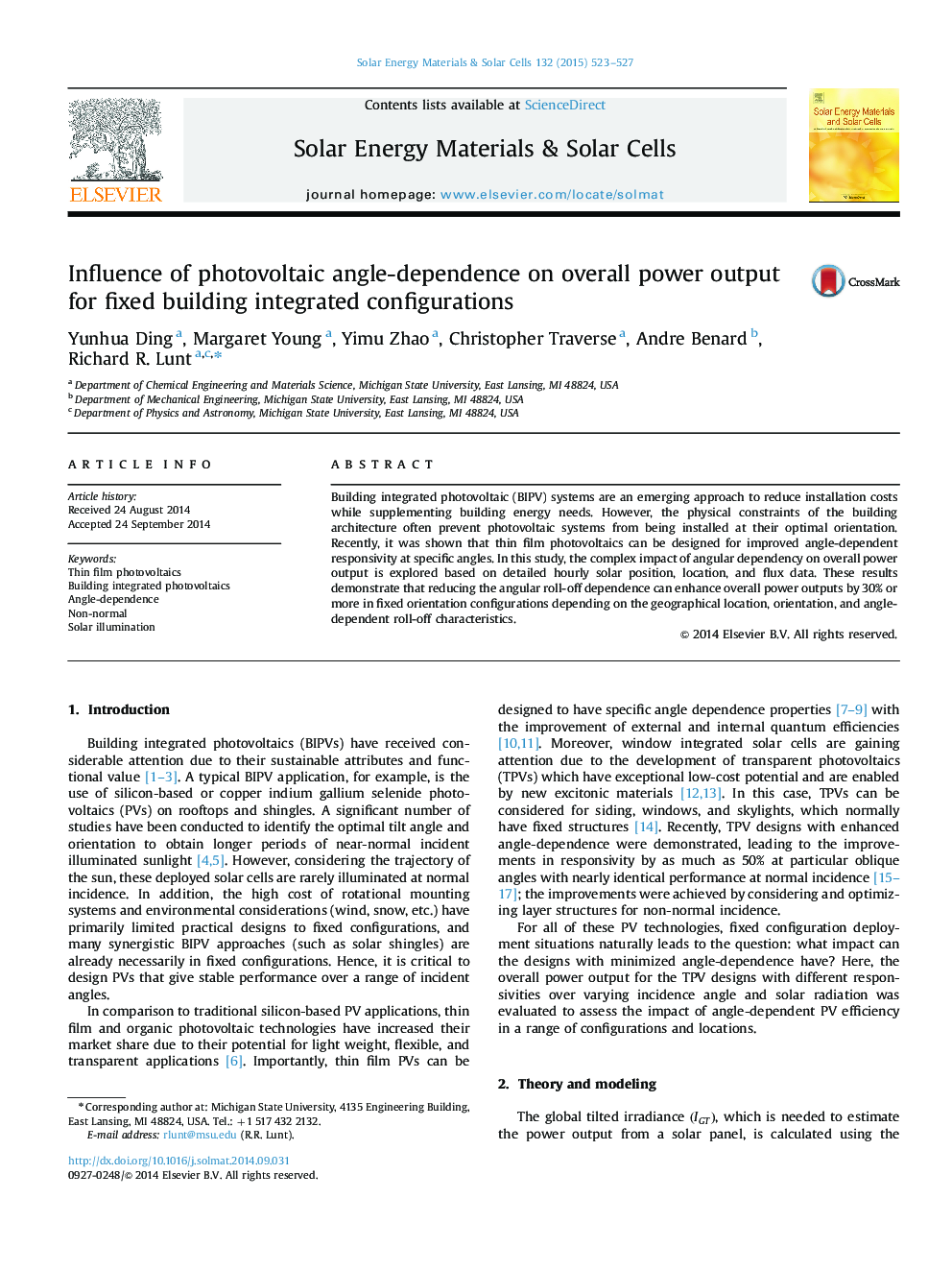| Article ID | Journal | Published Year | Pages | File Type |
|---|---|---|---|---|
| 6535471 | Solar Energy Materials and Solar Cells | 2015 | 5 Pages |
Abstract
Building integrated photovoltaic (BIPV) systems are an emerging approach to reduce installation costs while supplementing building energy needs. However, the physical constraints of the building architecture often prevent photovoltaic systems from being installed at their optimal orientation. Recently, it was shown that thin film photovoltaics can be designed for improved angle-dependent responsivity at specific angles. In this study, the complex impact of angular dependency on overall power output is explored based on detailed hourly solar position, location, and flux data. These results demonstrate that reducing the angular roll-off dependence can enhance overall power outputs by 30% or more in fixed orientation configurations depending on the geographical location, orientation, and angle-dependent roll-off characteristics.
Keywords
Related Topics
Physical Sciences and Engineering
Chemical Engineering
Catalysis
Authors
Yunhua Ding, Margaret Young, Yimu Zhao, Christopher Traverse, Andre Benard, Richard R. Lunt,
